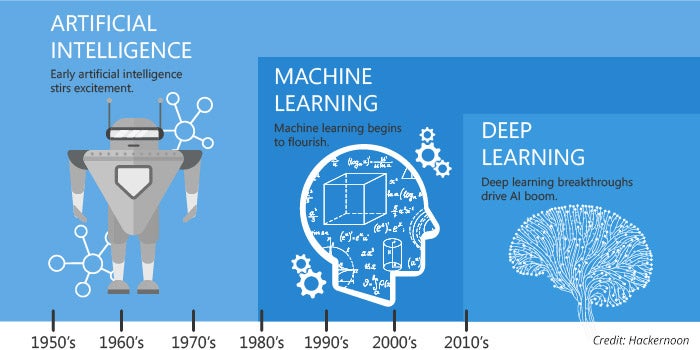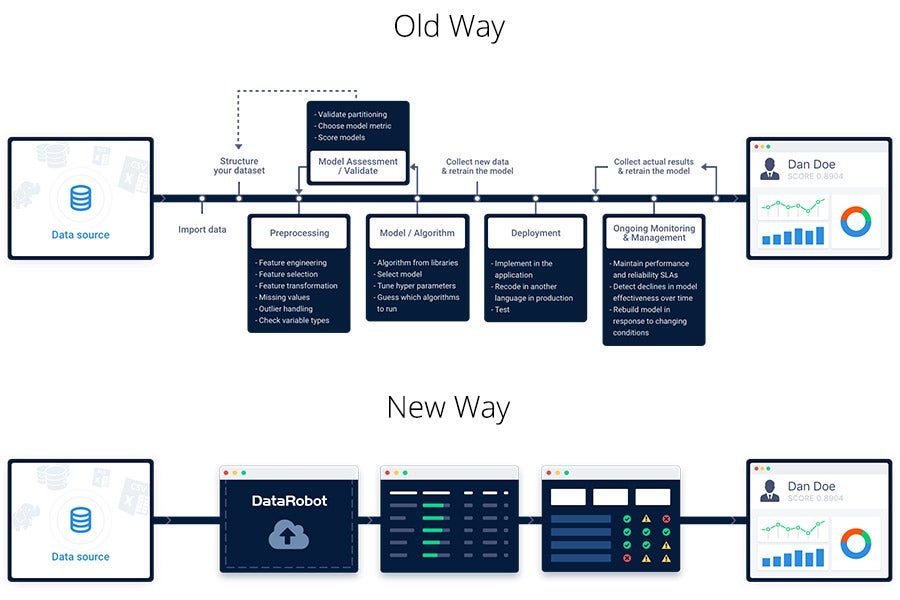Lessons in Machine Learning
Lessons in Machine Learning

Todd Holloway trained in computer science as an undergraduate and wanted whatever came next had to be interesting. He decided to turn his attention to the study of artificial intelligence at a time when “there weren't many career options for folks in AI” except at universities and in the defense industry. In recent years, he says, “The world has changed. The wind is at our backs.” During his career he has worked for an applied research lab, at startups like Trulia, and at Netflix. Holloway is now senior director of data and personalization science at Nike and a UCLA Anderson lecturer. He teaches Topics in Management: Machine Learning and Artificial Intelligence, a course presented by the Easton Technology Management Center.
Q. Before we even get started, could you please define “AI” for our readers?
You start with the heavy questions! Let’s keep it simple — for the purpose of this course, we’re talking about machine learning and the data involved in machine learning. And we’re specifically focused on its application in industry.

Q: How did you and Easton Center faculty director Terry Kramer conceive the course?
Maybe four or five years ago, while I was living in L.A., Terry reached out and we grabbed coffee. He said he was looking for a guest lecturer for his technology management class. Since then I’ve probably guest-lectured a half dozen times for him. I always enjoy it. I usually try to get there early and listen in on Terry. He’s such a master of engaging his students and focusing them on the most important themes.
A couple years into that, Terry mentioned the university was interested in adding more course offerings around AI and data science. So we went to work on what a course might look like. There wasn’t really a paved path; we couldn’t point to one other class at any other university and say that’s the model we wanted to use. Some MBA programs we looked at offered data sciences that were light versions of the more technical classes found in engineering departments. We didn’t want it to be only that.
Q. What is the goal of the class?
The goal is to expose students to successful patterns in the application of AI. We want students to learn how they can best leverage the technologies. Whether they are working at a company, starting one or funding someone else’s company ― whatever the context, we just really want them to walk away with a much more grounded understanding of what artificial intelligence is and, again, the patterns for how to leverage it.
“I realized it is imperative that we, as forward-thinking leaders and managers, carefully consider and adopt AI in all strategic decisions to add value.”
— Nithya Muthuramen (’19), UCLA Anderson alumna
Q. What are the course materials like? What are some of the assignments? Pretend I’m an Anderson student, pitch me the class.
The class has a high-low-high aspect. We start high and talk about strategy and organizations and how different types of industries are leveraging AI. We bring in guest speakers. And for assignments we have the students do case studies.
Midway through the course, we go low and build actual machine learning models. But students don’t have to code. They never at any point in the class have to write code. What we do use is a state-of-the-art machine learning platform called DataRobot that is mostly point-and-click. If we had more time, I’d love to code with the students. But DataRobot works well, given the constraints of the course.
Toward the end of the course we go high again. Through some additional lecture material and a final project, we aim to tie together the technology itself with the patterns in its application.

Q. Do you discuss ethics in the course? No one wants Skynet coming online or wants to live in The Matrix, right?
Yes! We’ll bring in a guest speaker who focuses on ethical AI. Having values in the context of collecting data for AI is very important. We are going through that exercise right now at Nike and we decided that, out of the gate, we want our AI to have values. Choosing the right values to underlay data capture and AI is only going to become a more important topic over time.